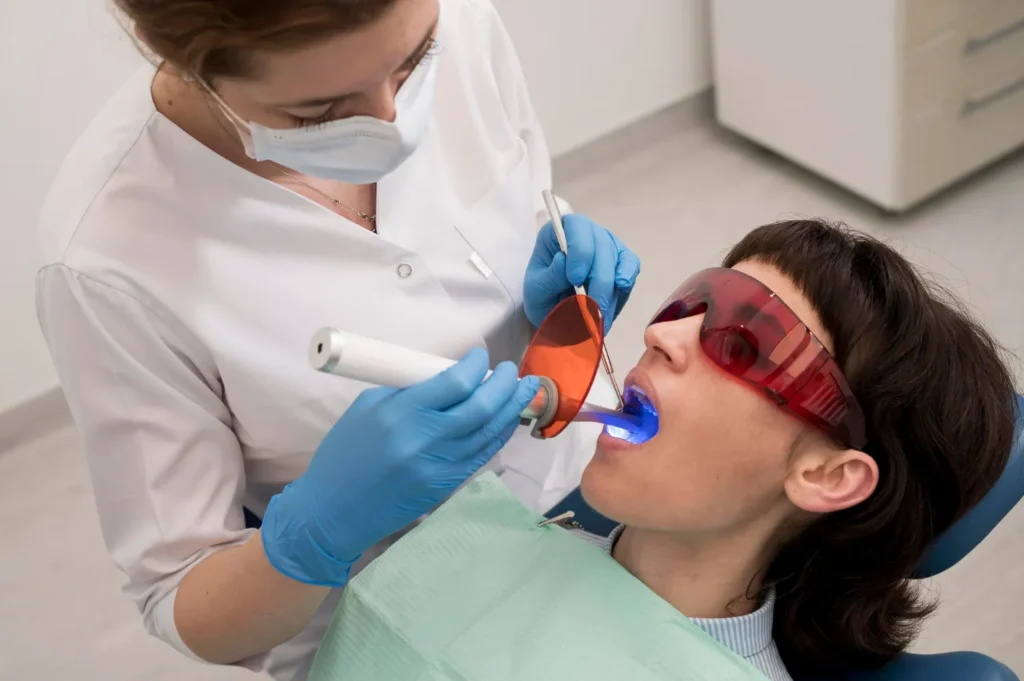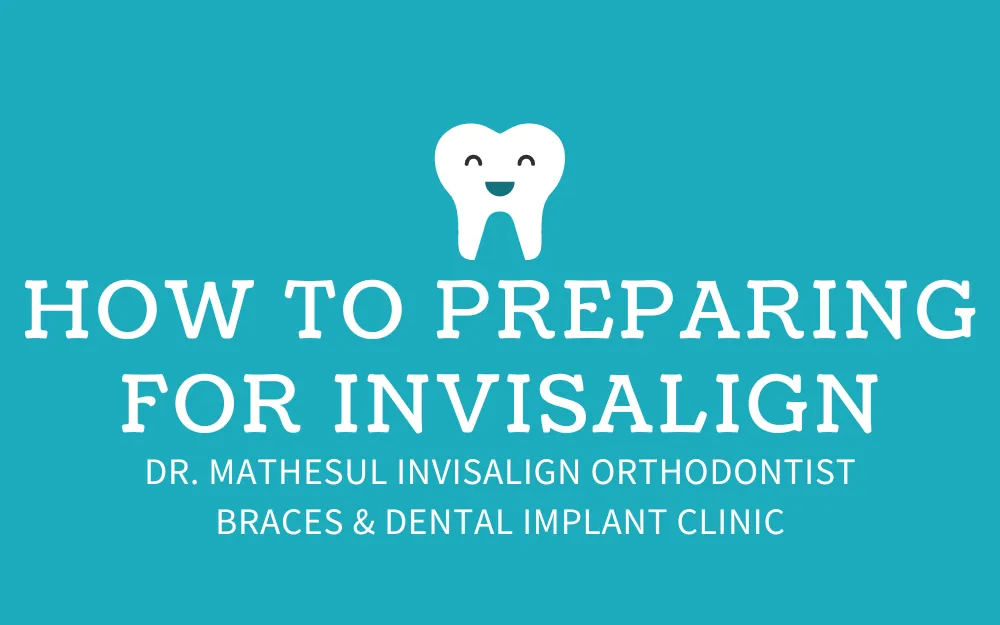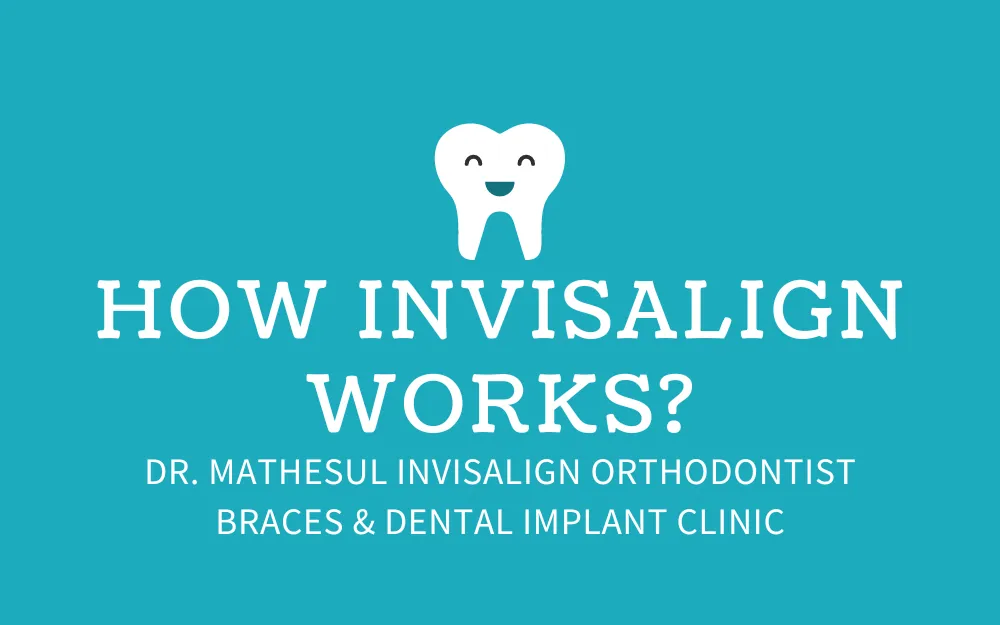Welcome to the advanced and precise world of laser dentistry, a revolutionary approach that has dramatically transformed dental care in modern practices. This innovative technology harnesses the power of various laser types, like the Soft Tissue Laser and Hard Tissue Laser, to perform a myriad of dental procedures more effectively and gently than ever before. From intricate cosmetic corrections to complex surgeries interventions, laser dentistry stands out as a less invasive and highly accurate alternative to traditional mechanical tools. In this comprehensive guide, we will explore how laser dentistry is reshaping patient experiences and outcomes, offering faster, cleaner, and more precise modern dental care.
Table of Contents
ToggleKey Benefits of Laser Dentistry

Precision and Accuracy in Dental Procedures
The cornerstone of laser dentistry is its unparalleled precision and accuracy. Tools like the Er: YAG Laser and CO2 Laser can target diseased or compromised tissue with incredible exactitude, preserving healthy surrounding structures. This precision ensures that treatments such as Frenectomy and Gingivectomy are not only practical but also conservative, minimizing tissue loss and enhancing the integrity of dental work through meticulous ablation.
Minimized Pain and Discomfort for Patients
One of the most applauded advantages of laser dentistry is the significant reduction in pain and discomfort. Unlike traditional drills and blades, lasers can perform many procedures with minimal bleeding and without the need for direct contact with the tissue, as seen in Photobiomodulation and Laser Root Canal Therapy. This reduces trauma, lowers the risk of infection, and often eliminates the necessity for anesthesia, providing a painless procedure that enhances patient comfort.
Faster Healing and Recovery Times
The minimally invasive nature of laser technology also leads to faster healing and recovery. The precision of the laser minimizes tissue damage, which accelerates the body’s natural healing processes. Patients benefit from smooth and quick recoveries, making treatments like Laser Assisted New Attachment Procedure (LANAP) ideal for those with busy lifestyles or those who prefer shorter recovery periods.
Applications of Laser Dentistry in Clinical Practice
Soft Tissue Procedures: Gum Reshaping and Periodontal Therapy
Lasers excel in managing soft tissue procedures with exceptional ease and effectiveness. They are commonly used for cosmetic gum reshaping, where excess gum tissue is removed to improve the appearance of a “gummy smile.” Moreover, lasers are pivotal in Periodontal Therapy, allowing for the removal of infected gum tissue without damaging healthy tissue, thus promoting better periodontal health through biostimulation.
Burdensome Tissue Procedures: Cavity Detection and Tooth Preparations
In challenging tissue applications, lasers offer benefits such as precise cavity detection and preparation. Laser Cavity Detection technology uses high-energy light to detect changes in tooth structure early on, allowing for earlier intervention with less invasive treatments. When preparing teeth for fillings or crowns, lasers eliminate the need for drills, reducing patient discomfort and preserving more of the natural tooth structure.
Aesthetic Enhancements: Teeth Whitening and Smile Makeovers
Lasers also play a significant role in cosmetic dentistry. Laser Teeth Whitening procedures are fast and effective, brightening teeth several shades in just one session. For smile makeovers, lasers provide tools for tissue sculpting and reshaping, offering patients enhanced results with reduced discomfort and healing time.
Technological Advancements in Laser Dentistry
The landscape of laser dentistry is continually evolving, with advancements enhancing both the capabilities of laser devices and the scope of procedures they can perform. Modern dental lasers are equipped with sophisticated control systems that allow dentists to precisely manage the wavelength and power output, tailor treatments to individual patient needs, and improve overall treatment outcomes. Integration with digital imaging and CAD/CAM technology further refines the accuracy and efficiency of laser procedures, pushing the boundaries of what can be achieved in dental medicine.
Comparative Analysis: Laser Dentistry Vs Traditional Methods

Efficiency and Outcome Comparisons
Laser dentistry represents a significant advancement over traditional methods in terms of both efficiency and clinical outcomes. Procedures that typically require multiple appointments can often be completed in a single session with lasers. This not only saves time but also reduces the cumulative stress and discomfort associated with repeated dental visits.
Patient Experience and Feedback
Feedback from patients who have undergone laser treatments is overwhelmingly positive. They report less pain, quicker recovery, and higher satisfaction with the results. The reduction in anxiety and discomfort makes laser treatments particularly appealing to patients who are fearful or apprehensive about dental procedures.
Safety and Compliance in Laser Dentistry
High standards of safety and compliance characterize laser dentistry. Stringent protocols ensure the safe operation of lasers, and dentist receive specialized training to become proficient in laser techniques. This training covers both the technical skills required to operate lasers and the safety measures necessary to protect patients and dental staff.
Cost-Effectiveness of Laser Dentistry for Patients and Practices
Analysis of Long-term Cost Benefits for Patients
Although the initial costs of laser treatments might be higher, the long-term benefits justify the investment. The precision of laser treatment often results in fewer complications and a decreased need for future corrective procedures, ultimately saving patients money over time. Moreover, the efficiency of laser treatments can reduce the overall number of dental visits required, further decreasing the total cost of dental care.
Return on Investment for Dental Practices Adopting Laser Technology
For modern dental practices, investing in laser technology can significantly boost practice efficiency and patient throughput. The ability to offer state-of-the-art treatments can also attract a broader patient base, including those seeking the latest in dental care technology. Over time, the increased efficiency and patient volume can lead to substantial financial benefits for the practice, offsetting the initial investment costs and contributing to a firmer financial footing.
Future Trends in Laser Dentistry

The future of laser dentistry is auspicious, with ongoing research and development paving the way for new applications and even more effective treatments. Innovations in laser technology are expected to improve not only the precision and safety of dental procedures but also make them more affordable and accessible.
Expanding Applications
Emerging research indicates potential new applications for dental lasers, including more effective treatment of dental infections, enhanced bone regeneration in orthodontics, and even the early detection and treatment of oral cancers. As the technology advances, we can anticipate broader uses, making laser dentistry an even more integral part of dental care.
Increased Affordability and Accessibility
As the technology becomes more widespread and production costs decrease, the affordability of laser equipment is expected to improve. This will make laser dentistry more accessible to a broader range of dental practices, from high-end specialists to community clinics, expanding the benefits of this advanced technology to a wider patient population.
Conclusion – Laser Dentistry in Modern Dental Practices
Laser dentistry is not just a technological innovation; it is a paradigm shift in dental treatment that offers unparalleled benefits in terms of precision, patient comfort, and healing time. Whether you are a patient looking for the best possible care or a dental professional seeking to elevate your modern dental practice, laser dentistry provides compelling advantages.
This cutting-edge technology not only enhances the quality and efficiency of dental treatments but also significantly transforms the dental experience, making it more pleasant and less intimidating for patients. As we look to the future, laser dentistry is set to become even more prevalent in dental practices worldwide, continually improving and shaping the landscape of dental care.
Transform Your Dental Care With The Latest in Laser Technology.
Ready to experience the future of dentistry? At Dr. Mathesul Invisalign Orthodontist Braces and Dental Implant Clinic, we’re committed to providing you with state-of-the-art dental care that’s both effective and comfortable. Visit us at our conveniently located clinic on the 1st Floor, F6, Gera’s 77 Building, Chowk, Nagar Rd, next to Punjab National Bank, Ramwadi, Kalyani Nagar, Pune, Maharashtra 411014, and discover how our advanced laser dentistry services can transform your dental experience. Book your appointment today and take the first step towards a brighter, healthier smile.
FAQs About Laser Dentistry in Modern Dental Practices
What is laser dentistry?
Laser dentistry is a modern dental technology that uses focused light beams, such as those from a Diode Laser or Er: YAG Laser, to perform various dental procedures more precisely and less invasive than traditional methods.
What types of dental procedures can be performed with lasers?
Dental lasers can be used for a variety of procedures, including soft tissue-related processes like Gingivectomy and Frenectomy, as well as hard tissue applications such as Laser Cavity Detection and tooth preparations. Laser Tooth Whitening and Periodontal Therapy are also popular uses.
Is laser dentistry painful?
One of the significant benefits of laser dentistry is the minimal pain involved. In many cases, procedures performed with lasers, like those involving Photobiomodulation for pain relief, are less painful than traditional methods, reducing or even eliminating the need for anesthesia.
How safe is laser dentistry?
Laser dentistry is extremely safe when performed by a trained and certified dentist. Lasers like the Nd: YAG Laser and CO2 Laser are used with specific safety measures, such as protective eyewear, to protect both the patient and the practitioner.
What are the benefits of using laser dentistry over traditional methods?
Benefits include reduced discomfort, precision in treatment through technologies like Laser Fluorescence, less bleeding and swelling, lower risk of infection, quicker recovery times, and often, better clinical outcomes.
How does laser dentistry minimize recovery time?
Lasers promote blood clotting and can seal off nerve endings and blood vessels during the procedure. This minimizes bleeding and swelling and accelerates the healing process, which is particularly beneficial in procedures like the Laser-Assisted New Attachment Procedure (LANAP).
Can laser dentistry be used for children?
Yes, laser dentistry is suitable for patients of all ages, including children. It can be particularly advantageous for young patients who may fear traditional dental drills, providing a gentle care experience.
Are laser dental treatments more expensive than traditional treatments?
Due to the technology used, laser treatments might initially be more expensive. However, the overall cost can be offset by the reduced need for multiple visits and quicker recovery, making them cost-effective in the long run.
How long do laser dental procedures take?
The duration of laser dental procedures can vary depending on the type of treatment. However, many laser treatments are faster than traditional methods because they require less setup and recovery time.
What should patients expect after undergoing a laser dental procedure?
Post-procedure experiences can vary, but generally, patients can expect less discomfort and a faster return to normal activities. Specific aftercare instructions will depend on the type of procedure performed and should be followed as directed by the dentist.





